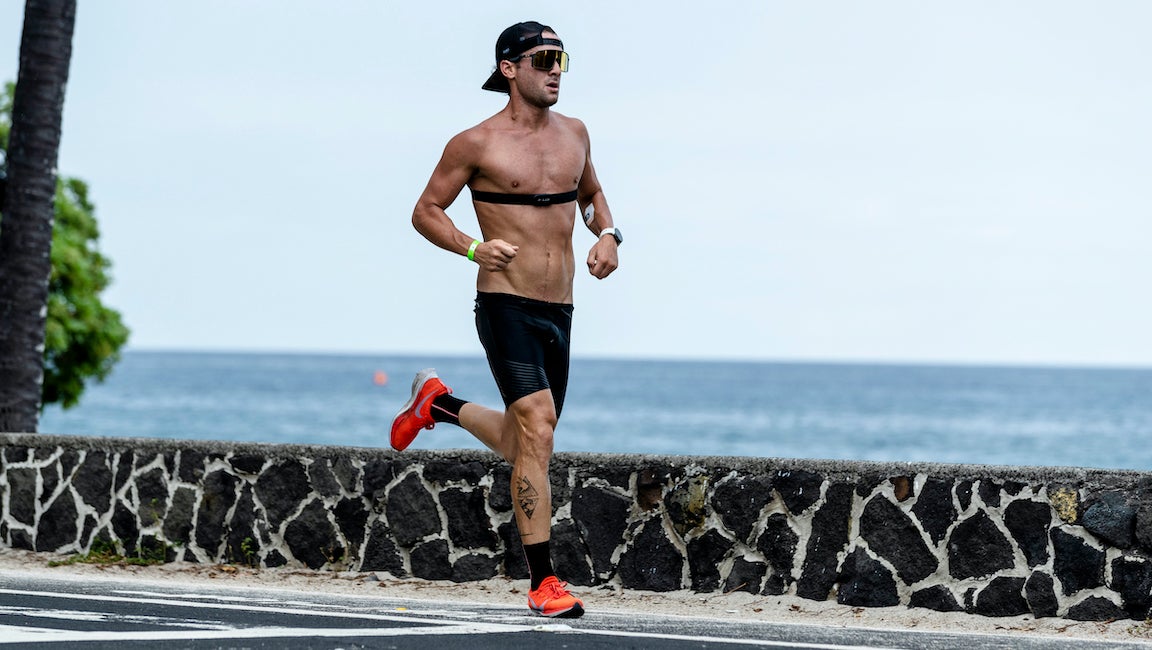This Sweat Patch Could Be a Race Nutrition Game-Changer

(Photo: Science Advances)
Scientists studying the way athletes sweat have come up with a skin patch that can measure your rate of fluid and electrolyte loss in real time, potentially allowing you to fine tune your hydration plan during a race.
The current version is a bit smaller than a credit card and requires the user to scan it with a smartphone camera and use an app to interpret the results. That design makes it more a research and training tool than something that can conveniently be used in races—though it might be useful for events like the pentathlon, or for sports like tennis, basketball, and football, where the action is punctuated by breaks long enough to grab a phone and take a scan.
But the current version is just a prototype. Ultimately, the patch might be reduced to the size of a quarter and wired by Bluetooth to a sports watch or other wearable monitor.
The goal, said John Rogers, a biomedical engineer and co-author of a paper in the most recent issue of Science Advances (sister publication to the better-known journal Science) is to get the information to athletes in easily usable form. (The paper’s lead author, Lindsay Baker of the Gatorade Sports Science Institute, Barrington, Illinois, could not be reached before press time.)
“A Lab on Your Skin”
The patch uses microfluidic technology, in which thin layers of polymer contain tiny reservoirs of solvents, plus intricate arrays of valves and channels the size of a human hair. These corral sweat from beneath the patch and use the pressure under which it is expelled by the underlying sweat glands to collect small amounts of it. Once ingested this way, the patch then analyzes both the sweat’s amount and composition.
“Think of it like a lab on your skin,” said Rogers’ co-author, Roozbeh Ghaffari, another biomedical engineer at Northwestern University.
To measure the rate of sweating, all that’s needed is for the patch to inject a dye into it. That allows the dye-tinged sweat to be easily seen as it snakes through a serpentine array of channels. The farther it progresses, the more you’ve sweated.
To quantify this, the smartphone app takes a photo of its progress and interprets the result, either as a single result at the end of a workout, telling you how much fluid you lost, or in a series of snapshots at each hydration break.
Further Possibilities
But a lot more is possible. Patches can be designed, Rogers said, to measure many other things, ranging from electrolyte loss to the amount of glucose, lactate, proteins, or cortisol in your sweat. “[Sweat] is a rich collection of biomarkers,” he said.
At the moment, these too are measured by colorimetric analysis, where a chemical added to the sweat produces a reaction that changes its color, with the intensity of the change reflecting how much salt, etc., is present in it.
In the case of salt, for example—probably the most important for endurance athletes—the process uses a reagent that reacts with its chloride to turn it purple. The intensity of the purple reflects how much salt you’ve lost—strongly enough that you might not need an app to eyeball the difference between a lot and a little.
“The orientation is around rehydration,” Rogers said.
Testing Effectiveness
Testing how well this works is the primary focus of the paper in Science Advances. To do that, the researchers had 43 athletes practice their sports under typical training conditions, then analyzed their sweat with both the patch and the “gold standard” method, in which gauze pads were taped their arms. The sweat collected by these pads was then wrung out, weighed, and its contents measured via high-performance liquid chromatography (HPLC) a well-established laboratory method.
“That’s what people have being doing in sports science labs for the past 20 or 30 years,” Ghaffari said. It works well, he adds, but isn’t “well aligned” with the real world, where athletes don’t have the luxury of instant access to an HPLC machine.
Having verified that the patch’s “lab in a chip” actually works, his team’s next step was to correlate the amount of sweat collected by their patches with athletes’ overall rates of sweat loss, measured by other techniques (such as overall weight loss).
To do that, they correlated results from the patch to whole body measurements for 312 athletes working hard enough to sweat off an average of .92 liters per hour. “This is probably one of the larger studies done using these metrics,” Ghaffari said.
The patches can’t, however, be placed anywhere on the body and produce good results. It has long been known that there are parts of the body where the sweat rate correlates well with the overall rate, and others where it does not. “Two areas that do well are the inner lower forearm and the lower back,” Ghaffari says.
What’s Next?
The next step, he and Rogers suggest, is to change the chemistry of the microfluidic patch from colorimetric tests that need to be scanned with a camera to ones whose results can be measured with electrochemical sensors. That would allow the results to be sent by Bluetooth to a sports watch or other wearable monitor.
But that’s not the focus of today’s study, Rogers says. “This is the kind of data you want to back up the technology,” he said.